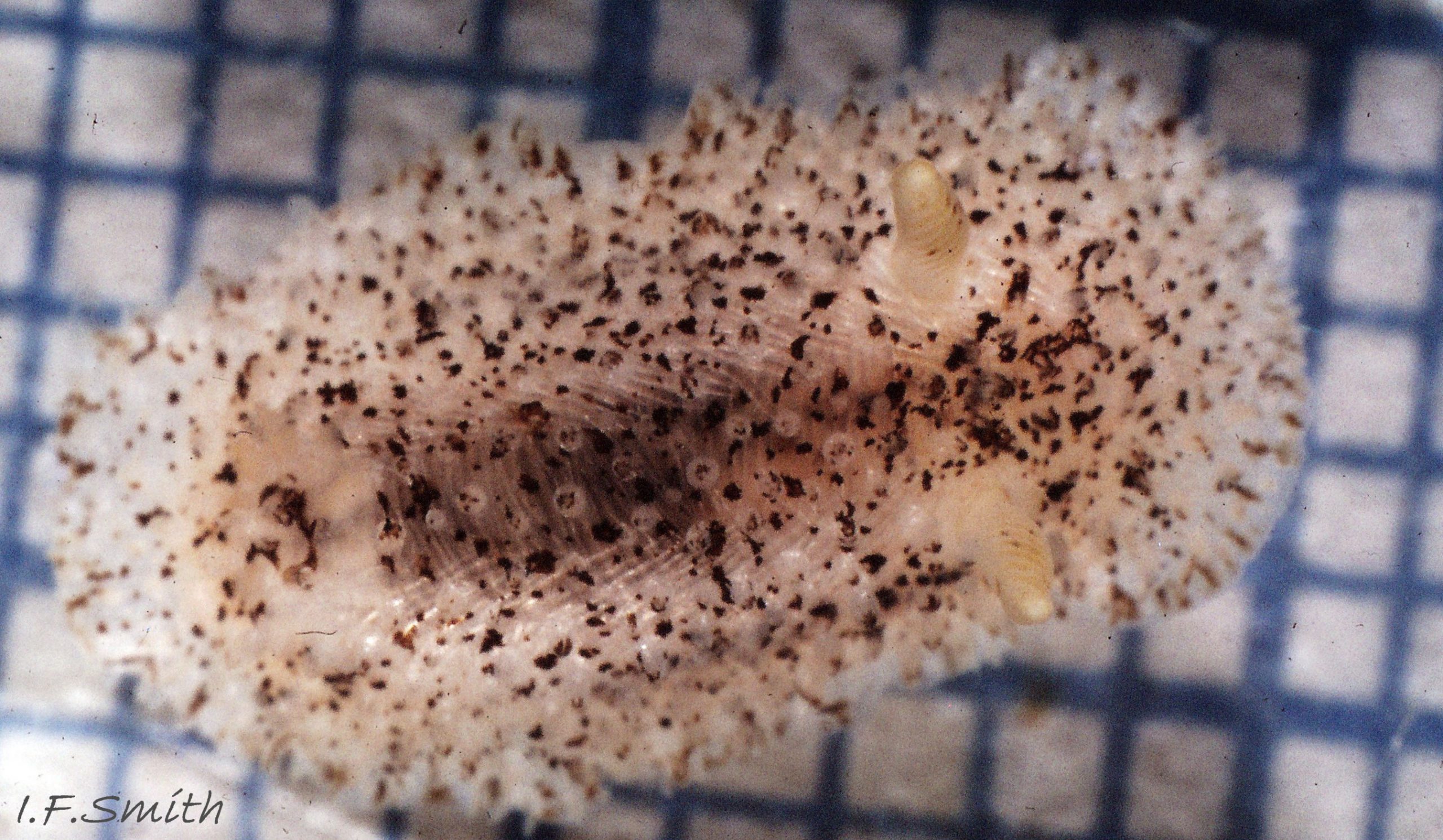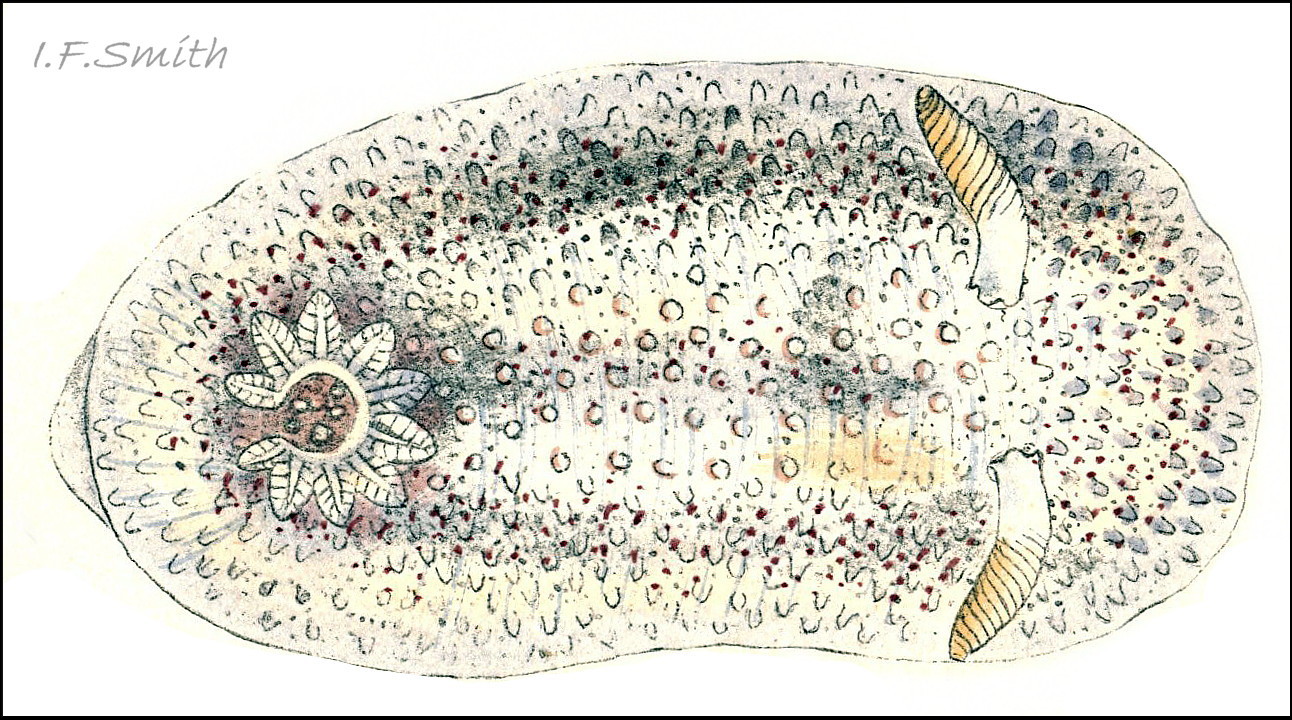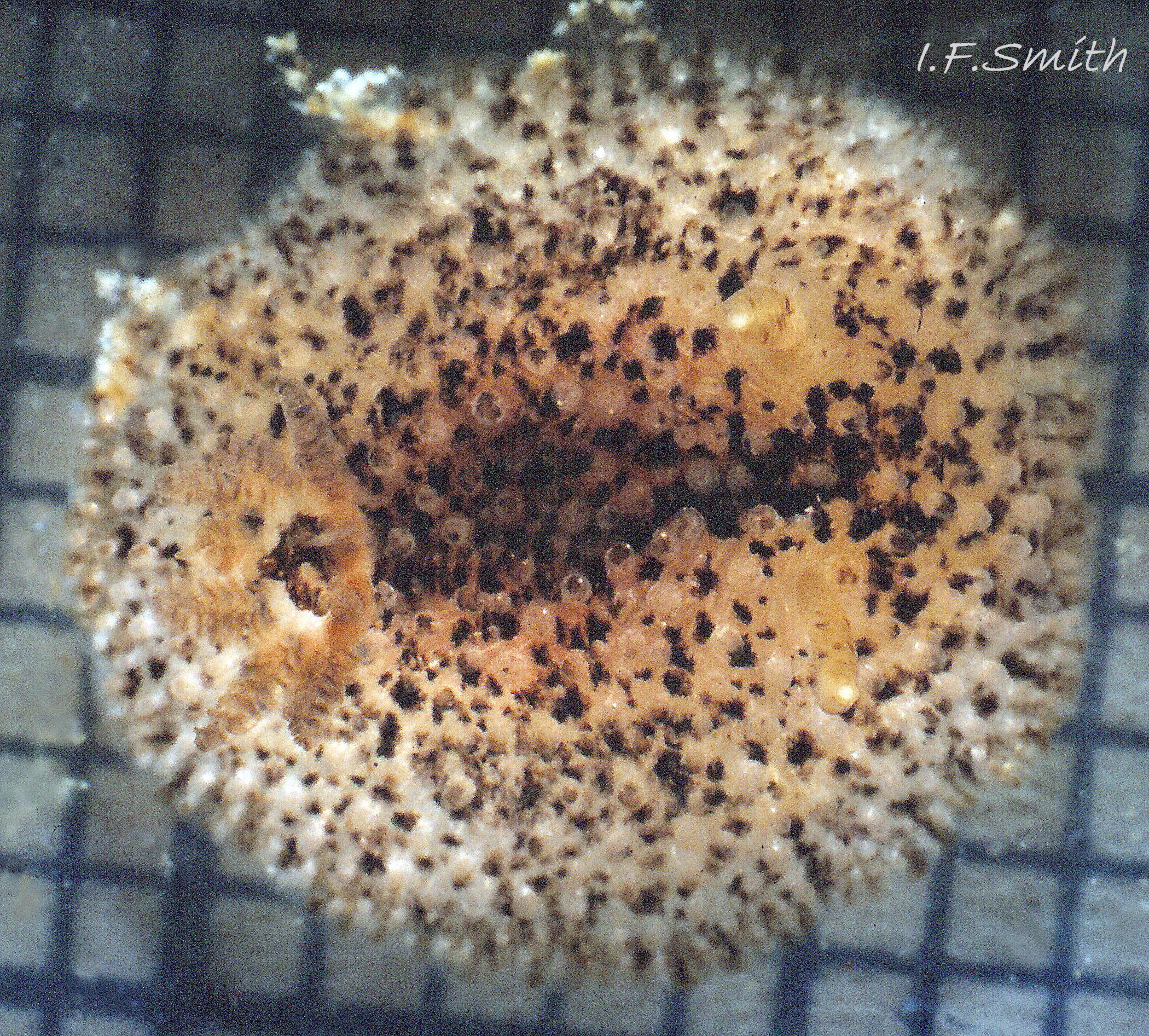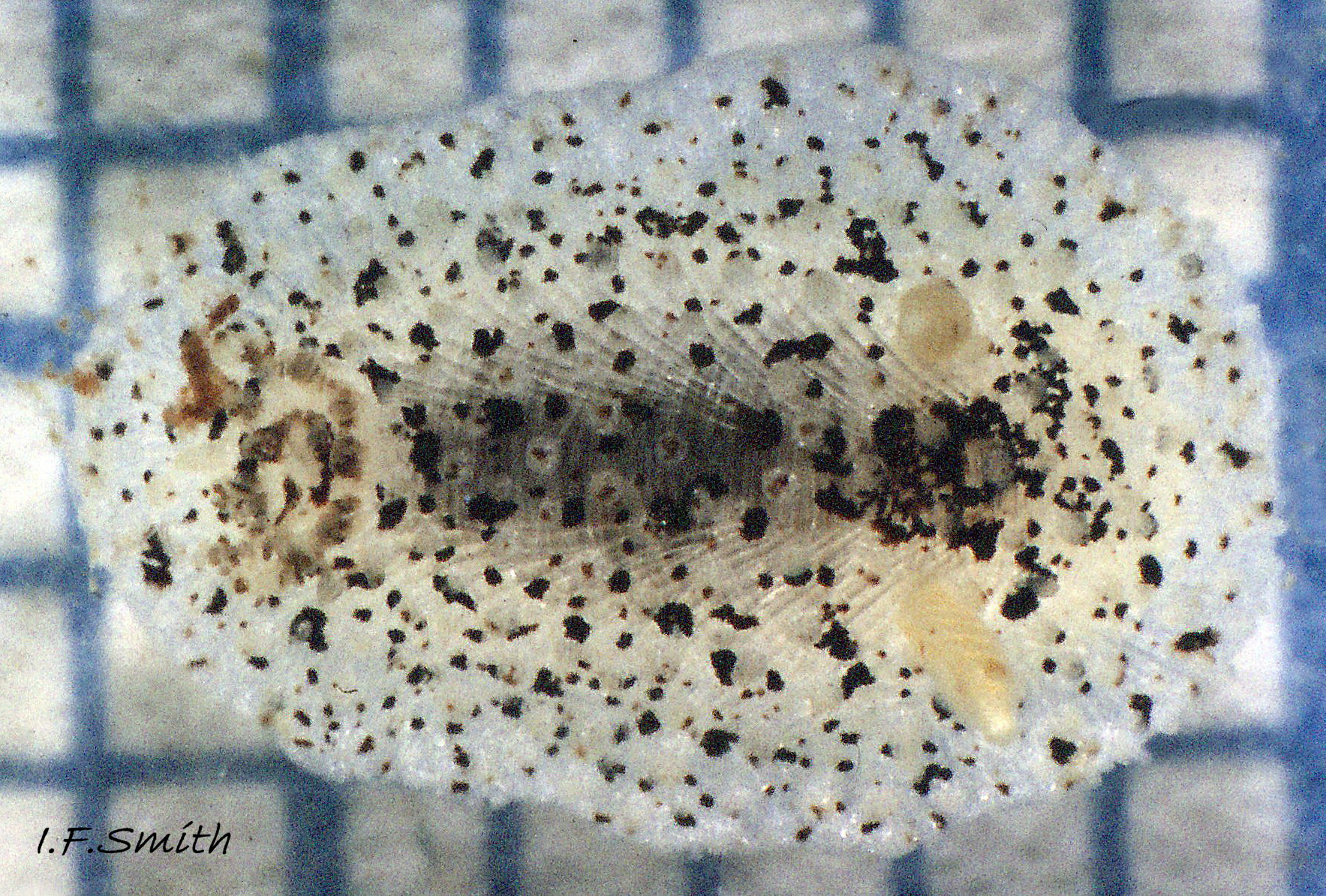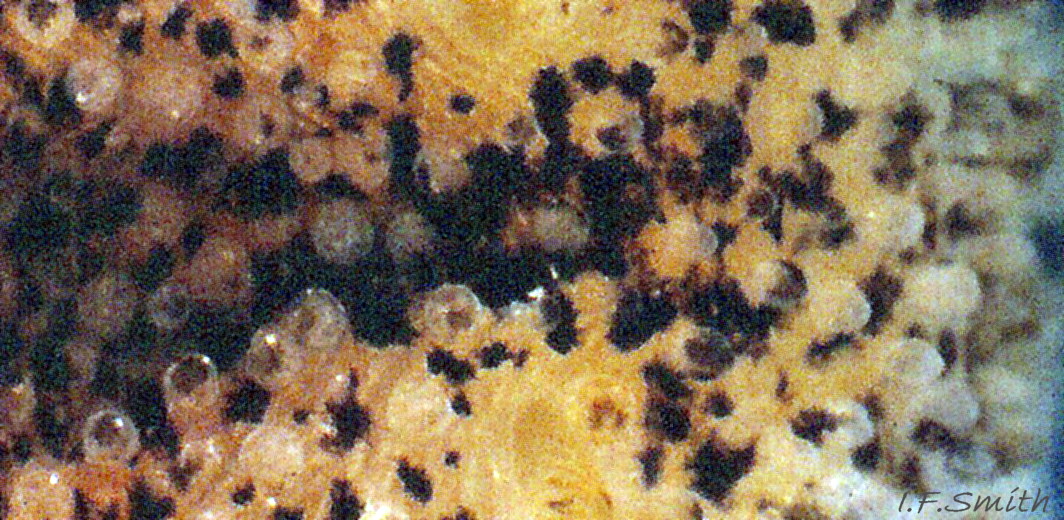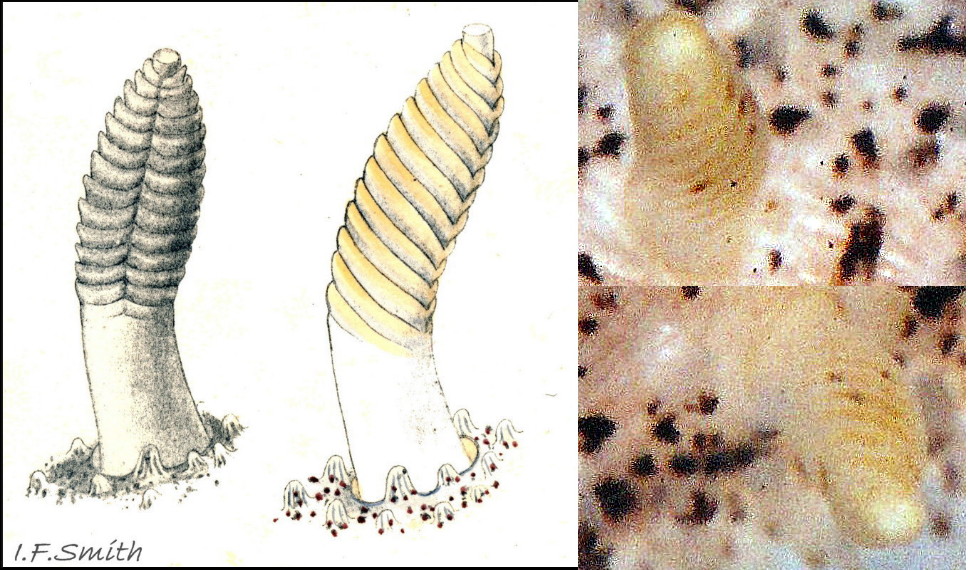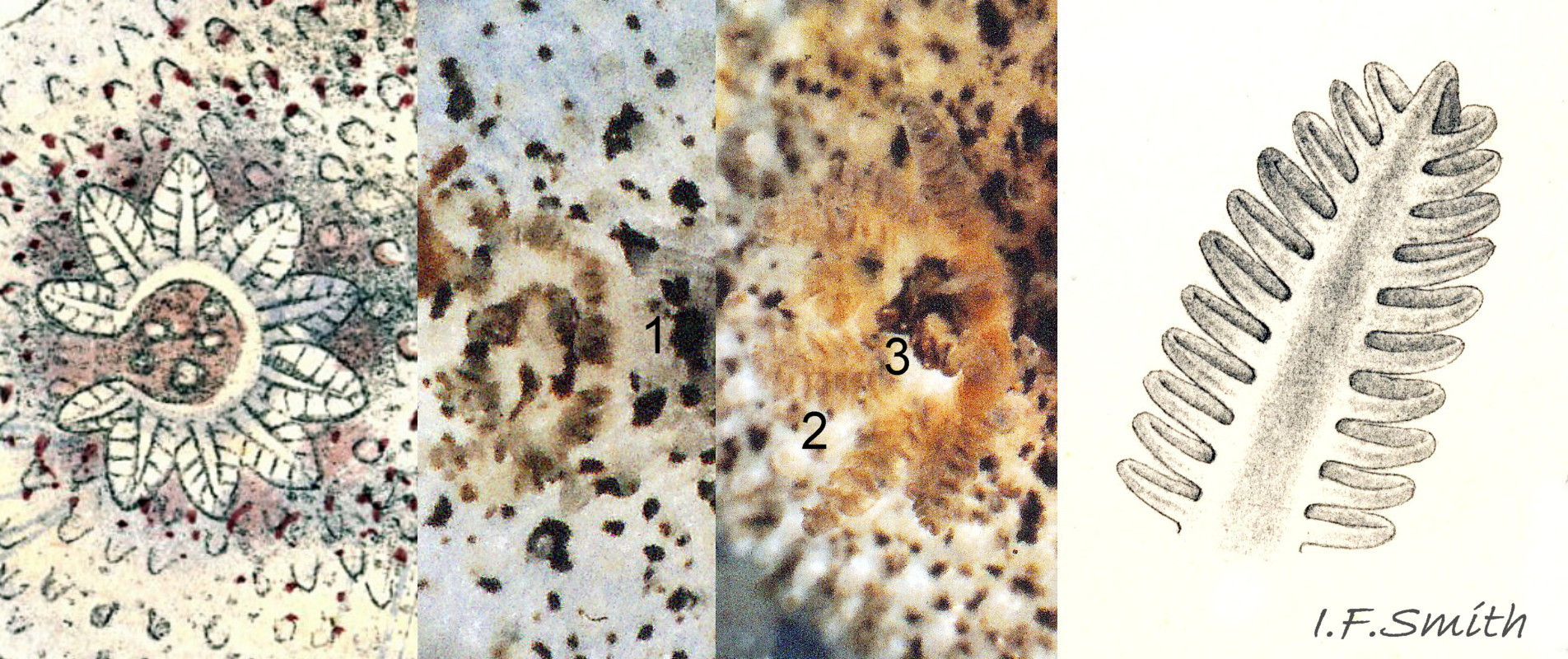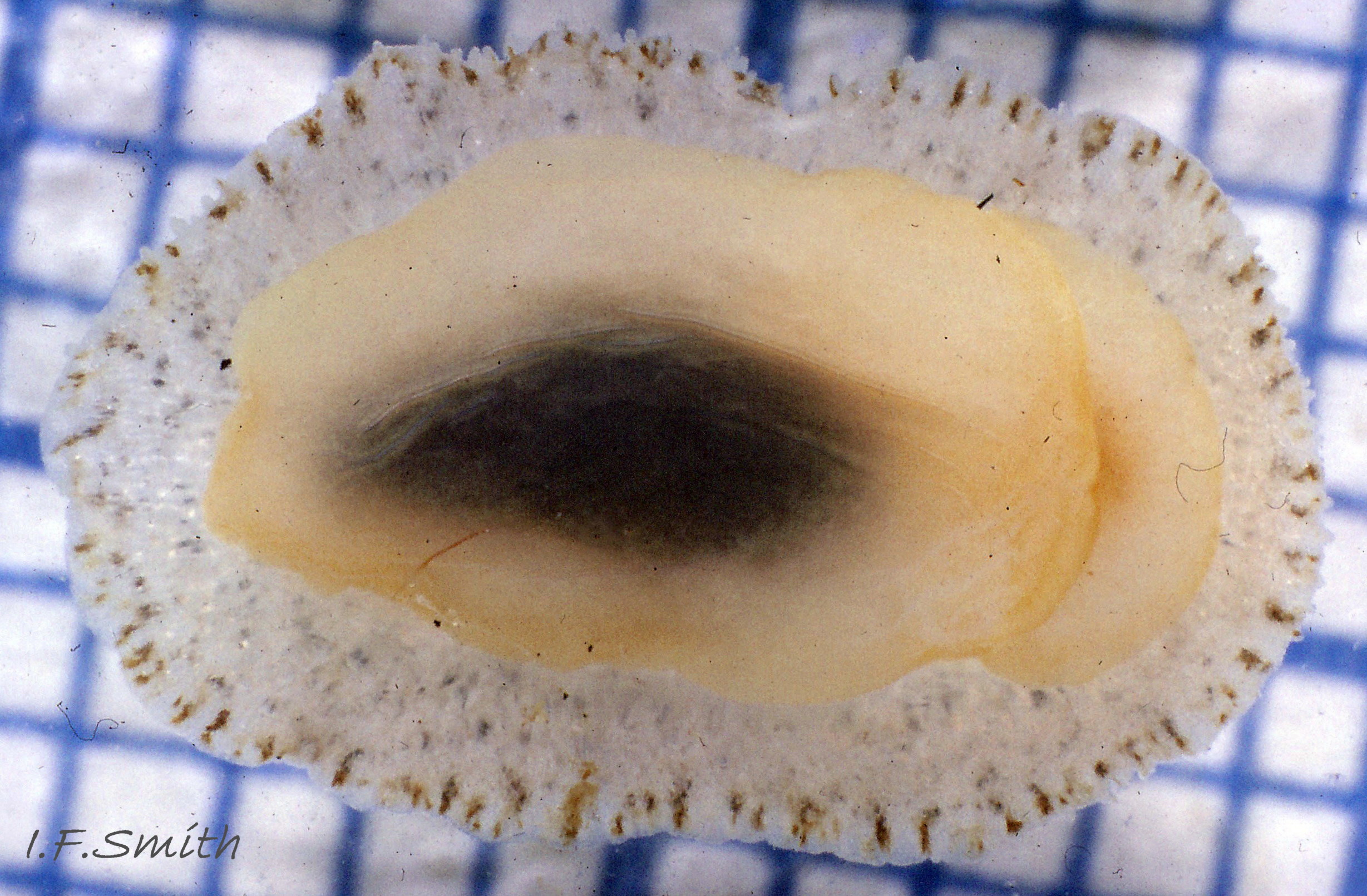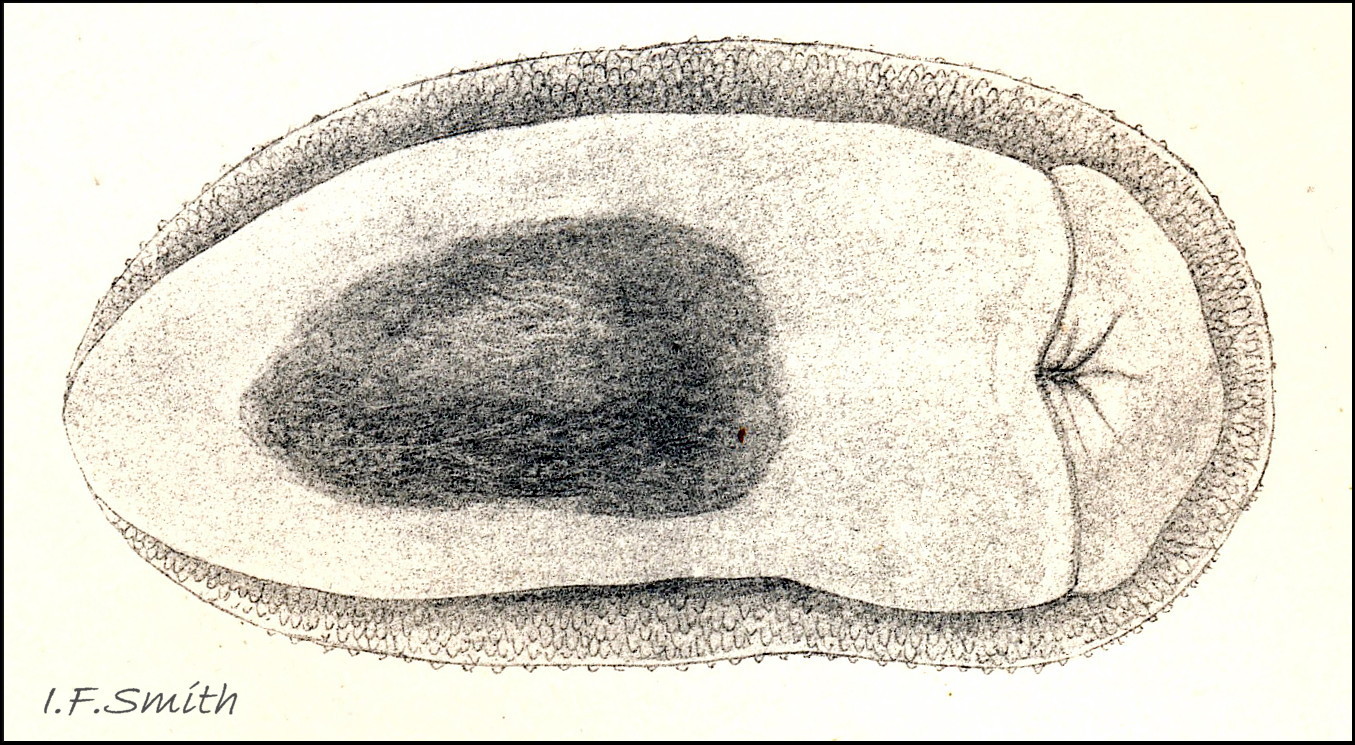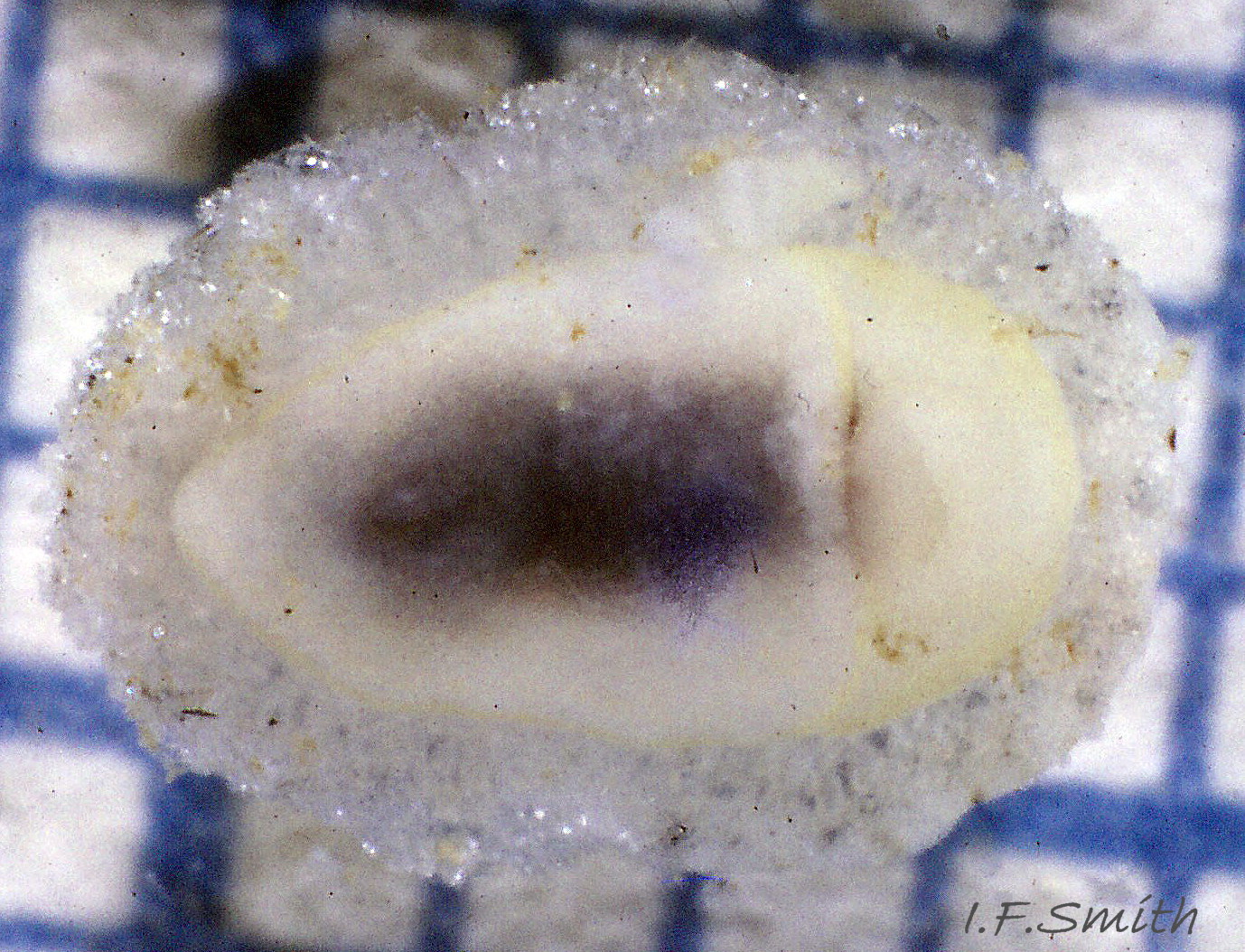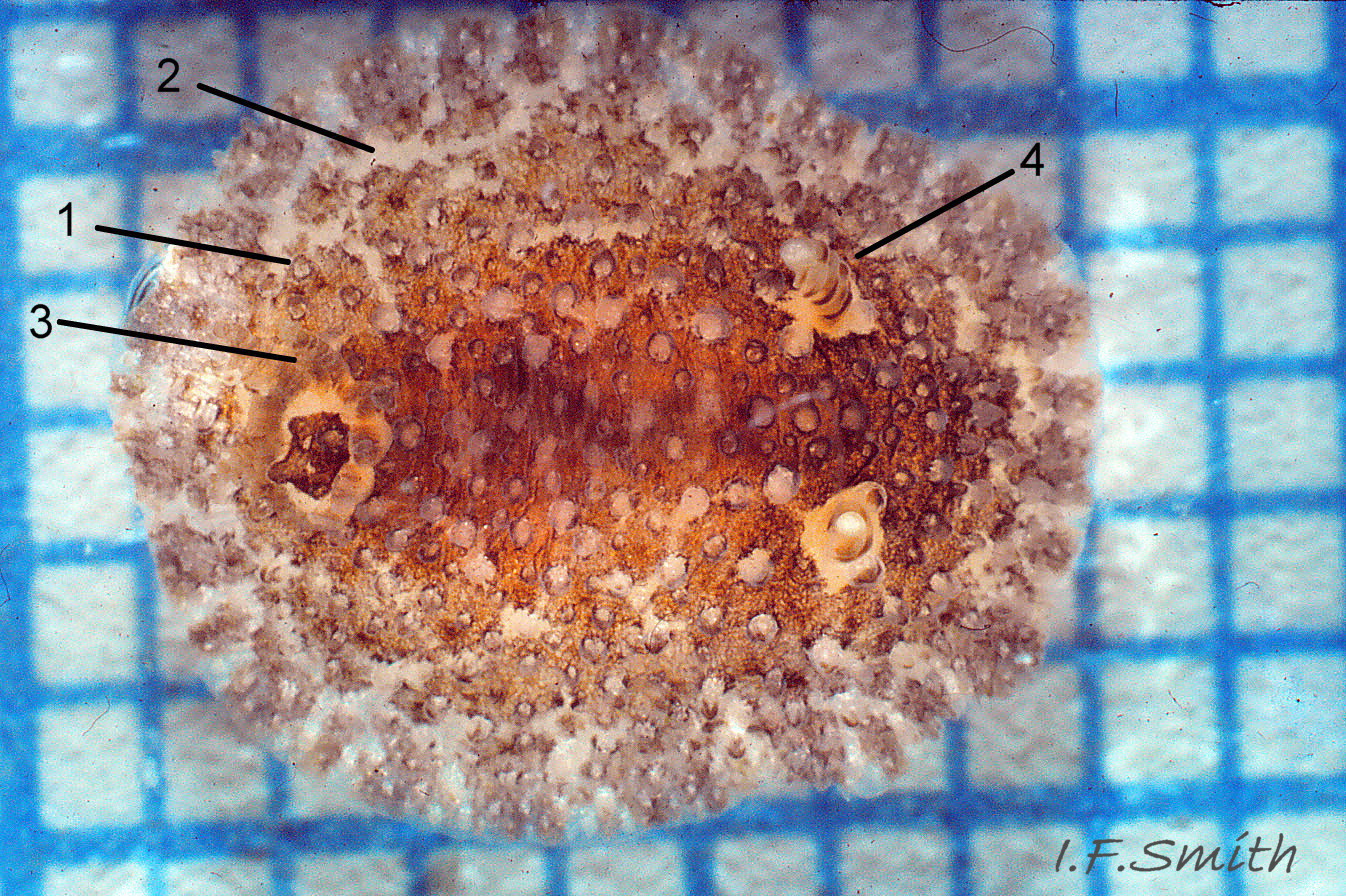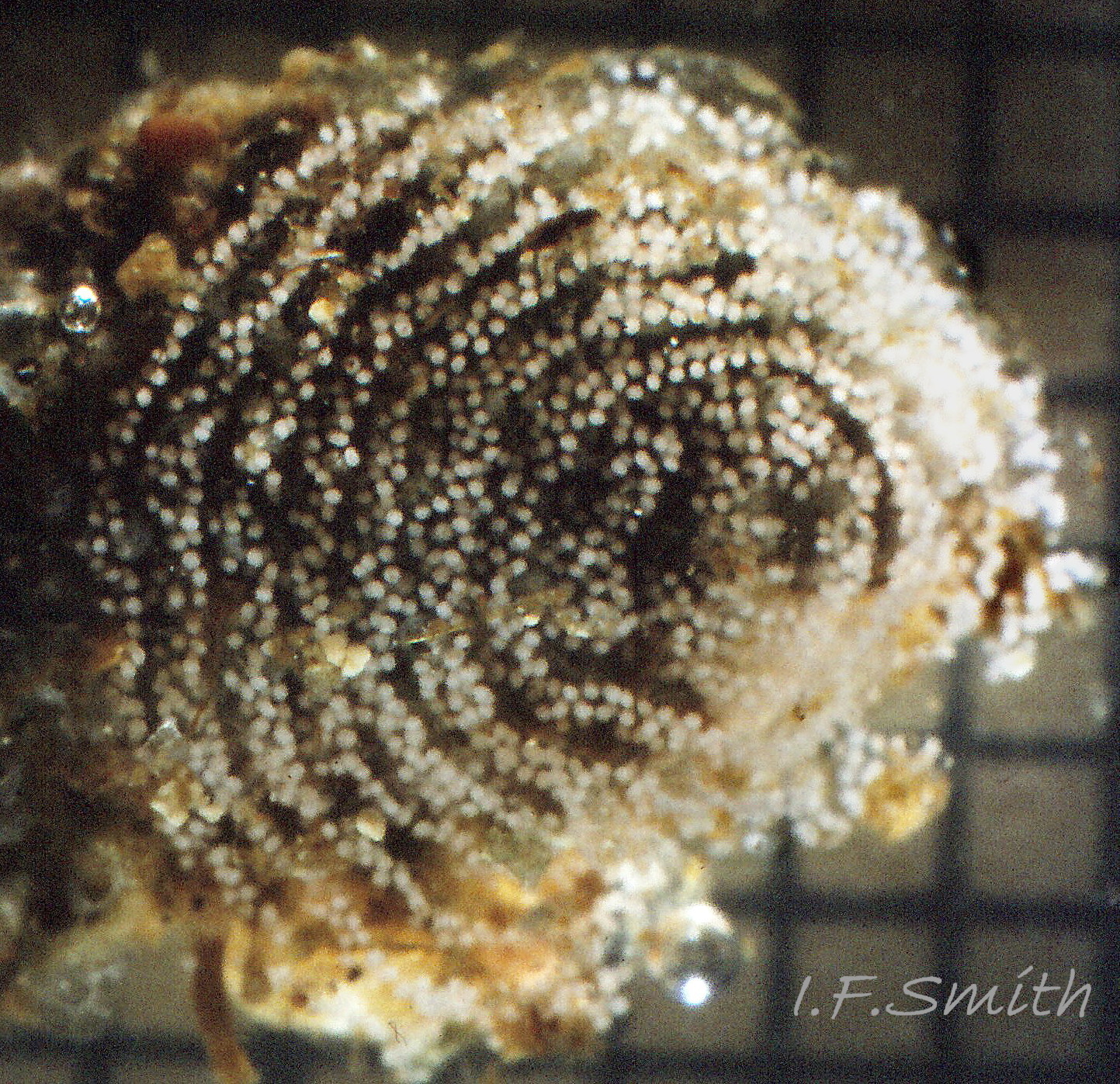Click image to enlarge with full caption. Main text below slider.
Atalodoris cf. inconspicua (Alder & Hancock, 1851)
PDF available at www.researchgate.net/publication/359195586_Atalodoris_cf_…
Current taxonomy: World Register of Marine Species www.marinespecies.org/aphia.php?p=taxdetails&id=1565669
Synonyms: Doris inconspicua Alder & Hancock, 1851; Onchidoris inconspicua (Alder & Hancock, 1851); Knoutsodonta inconspicua (Alder & Hancock, 1851).
Meaning of name: Atalo = youthful, doris = name of a sea nymph, inconspicua = inconspicuous.
GLOSSARY BELOW
Preface
There is much uncertainty about the identity of the rarely found Atalodoris inconspicua and related species; hence the ‘cf.’ in the title of this account. See the ‘Discussion’ section below.
Description
Atalodoris cf. inconspicua grows up to 12 mm long. It has an elliptical outline when moving 01 Atalodoris cf. inconspicua & 02 Atalodoris cf. inconspicua and is more discoid at rest 03 Atalodoris cf. inconspicua . In profile it is a low dome.
The ample white mantle covers the whole body. It is translucent, showing obliquely aligned spicules subdorsally and blackish viscera dorsally 04 Atalodoris cf. inconspicua . The mantle has a rough appearance from its numerous, nearly uniformly small, blunt, spiculose tubercles 05 Atalodoris cf. inconspicua . The mantle and its tubercles are liberally sprinkled with black freckles and minute brown spots. When viewed from directly above against black viscera, the pale tubercles may form light halos around apical brown spots 04 Atalodoris cf. inconspicua .
The basal third of the stout, almost linear rhinophores is smooth and coloured as the mantle. The distal two thirds have up to fourteen closely set yellowish lamellae, often with a few flecks of brown pigment 06 Atalodoris cf. inconspicua . A small, white apex protrudes above the lamellae, and may be visible as a white spot when viewed from above. The margin of the basal rhinophoral cavity has no sheath or rim, only the normal small tubercles of the mantle.
There is a ring of about ten small, unipinnate, translucent, white gills 07 Atalodoris cf. inconspicua which may be black or brown distally, or suffused completely with yellow-brown 03 Atalodoris cf. inconspicua . There are often black or dark brown tubercular processes within the gill ring.
The head consists of a large, semicircular, oral veil with a depression leading to the mouth 08 Atalodoris cf. inconspicua & 09 Atalodoris cf. inconspicua .
The sole of the foot is approximately oval with a broad, truncated anterior 08 Atalodoris cf. inconspicua , sometimes recessed by the mouth 09 Atalodoris cf. inconspicua . The ample mantle is much wider than the foot and, in dorsal view, usually completely conceals it; only the posterior tip may protrude a little when moving 02 Atalodoris cf. inconspicua . The sole is translucent white 10 Atalodoris cf. inconspicua or yellowish 08 Atalodoris cf. inconspicua . The central blackish digestive gland is approximately elliptical, narrowest at the posterior 08 Atalodoris cf. inconspicua , and sometimes truncated at the anterior 10 Atalodoris cf. inconspicua variation seems to match how the anterior of foot is disposed.
Key identification features
Atalodoris cf. inconspicua
1) White mantle liberally sprinkled with small black freckles and minute brown spots, 04 Atalodoris cf. inconspicua .
2) Rhinophores have up to fourteen closely spaced lamellae with a few brown marks 06 Atalodoris cf. inconspicua .
3) Approximately elliptical, blackish digestive gland 08 Atalodoris cf. inconspicua .
Similar species
Atalodoris sparsa (Alder & Hancock, 1846)
1) Mantle predominately brown, peripherally dissected into blocks by light, unpigmented lines. 11 Atalodoris cf. inconspicua.
2) Rhinophores have up to nine, broad, widely spaced lamellae with brown marks.
3) Orange-brown digestive gland visible through sole.
Habits and ecology
A. cf. inconspicua lives on the lower shore and sublittorally. It feeds on Bryozoa, but there is uncertainty about which species; Cellepora pumicosa in Alder and Hancock (1845-55); Cellaria sinuosa in Thompson & Brown, (1984), and Cellepora pumicosa and Porella concinna, C. Todd in Picton & Morrow (2016). Spawn is deposited on or near its prey in a tightly wound, thin, about 7 mm diameter, spiral line of about eight turns in March (Alder & Hancock, 1844-54) and May 12 Atalodoris cf. inconspicua , image is not clear enough for identification of the bryozoan, but the form is consistent with Cellepora pumicosa . The white ova are two or three abreast in the spawn line.
Distribution and status
A. inconspicua is rarely recorded; the 1975 images in this account might be the first photographs of it. There are records of it from Northumbria, England 02 Atalodoris cf. inconspicua , southern Sweden, Brittany, Normandy (Thompson & Brown, 1984) and Orkney , & (det. B. Picton, www.seaslugforum.net/find/onchinco ). Confusion with other species may have resulted in some mistaken records. GBIF map www.gbif.org/species/9943999 UK map NBN species.nbnatlas.org/species/NHMSYS0021528510
Discussion of species name
In 1975, I sent a photograph of a live dorid and its preserved body to T.E. Thompson and G.H. Brown, which they examined closely and identified as Onchidoris sparsa. Its radula is described, and a painting based on the photograph shown, in Thompson & Brown (1984). I sent images of further specimens to which the response was, “they do not seem to disagree in any way with the conclusion we have already come to, i.e. that it is Onchidoris sparsa”. I accepted that at the time, but the wording suggests they were not as closely examined as the earlier material.
Three decades later, when re-examining the photographs I was struck by several differences in the later photographs from the A. sparsa studied in detail by TET & GHB. I posted the images and my qualms on the Sea Slug Forum www.seaslugforum.net/find/onchinco where B. Picton opined, with detailed reasoning, “I am pretty certain that it is Onchidoris inconspicua”. The photographs in question are figs. 1, 3, 4 and 8 in this account of A. cf. inconspicua. Uncertainty remains as, though the photographs show that the mantle is “sprinkled with very minute brown spots” (Alder & Hancock, 1845-1855), they also show plentiful black freckles which are absent from the description and image in Alder & Hancock (1845-55). The only dorid with similar dark freckles in Thompson and Brown (1984) is the image of Onchidoris oblonga on Plate 15 but their description has many differences, including an orange brown digestive gland and usual length of 5 mm, exceptionally 8 mm.
The appearance of the specimens in figures 1, 3, 4 and 8 is consistent with them being one species, but their identification as Atalodoris inconspicua is tentative.
References and links
Alder, J. & Hancock, A. 1845-1855. A monograph of the British nudibranchiate mollusca. London, Ray Society. Fam.1 Plate 12, figs. 9 – 16. www.biodiversitylibrary.org/item/131598#page/138/mode/1up
Picton, B.E. & Morrow, C.C. (2016). Onchidoris inconspicua (Alder & Hancock, 1851). [In] Encyclopedia of Marine Life of Britain and Ireland.
www.habitas.org.uk/marinelife/species.asp?item=W13340 Accessed 10 March, 2022.
Rudman, W.B., 2010 (January 12) Onchidoris inconspicua (Alder & Hancock, 1851). [In] Sea Slug Forum. Australian Museum, Sydney. www.seaslugforum.net/find/onchinco
Thompson, T.E. & Brown, G.H. 1984. Biology of opisthobranch molluscs 2. London, Ray Society.
Current taxonomy: World Register of Marine Species www.marinespecies.org/aphia.php?p=taxdetails&id=1565669 (WoRMS)
Glossary
cf. = ‘compare’; can be used to suggest a possible identity, or resemblance, of a specimen with a named species.
digestive gland = large organ in gastropods which acts like the liver and pancreas in mammals to absorb food.
dorid = a sea slug in the infraorder Doridoidei; with gills and rhinophores on the dorsum; often shaped like half a lemon or grape.
lamellae = (of sea slugs) small plates on rhinophores or leaflets of gill.
mantle = (of nudibranchs) sheet of tissue forming part or all of notum (dorsal body surface).
oral veil = anterior extension of head into a flat sheet.
rhinophore = chemo-receptor tentacle; many sea slugs have a pair on top of the head.
spicule = (in dorid seaslugs) small, slender, sharp-pointed feature mainly composed of calcite, CaCO3, and brucite, Mg(OH)2 .
